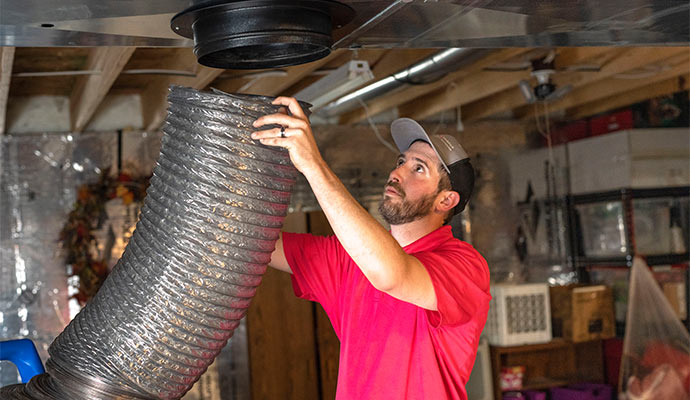Most people consider heating and cooling systems as visible components—thermostats, vents, furnaces, or air conditioning units. However, the unsung hero of indoor climate control is often the ductwork, which acts as the highway for conditioned air. Ducts quietly distribute air throughout homes and commercial buildings, influencing temperature control, air quality, energy efficiency, and system longevity. Even the most advanced HVAC equipment can fall short of delivering comfort when ductwork design is poor or overlooked. We will explore how thoughtful duct design is central to ensuring consistent performance. From layout to sizing and airflow balance, every detail in a duct system impacts the outcome. HVAC contractors must approach ductwork not as an afterthought but as a vital component of the overall system design. Getting it right from the start can be the difference between a smooth, cost-effective operation and a frustrating cycle of inefficiencies.
The Overlooked Backbone of Indoor Comfort
- Airflow Efficiency Begins with Proper Planning
Good ductwork design starts long before the first piece of metal or flex is installed. Planning the duct layout is a precise process that involves calculations related to load, airflow volume, and pressure loss. A misstep in these early stages can lead to uneven heating and cooling, where some rooms are stifling while others remain chilly. Poor airflow also strains HVAC equipment, causing it to run longer and work harder, leading to more frequent repairs and higher utility bills. Ducts that are too narrow restrict airflow, while ducts that are too wide can result in pressure drops that slow air delivery. Balancing these variables requires a clear understanding of the entire system’s design. Unfortunately, shortcuts in planning can result in noisy vents, hot and cold spots, and discomfort for the building’s occupants. HVAC contractors who prioritize accurate planning in ductwork design set the foundation for a system that delivers reliable performance year-round.
- Poor Duct Design Undermines Energy Efficiency
One of the most costly consequences of poor ductwork design is energy loss. Leaks bends, and improperly insulated ducts allow conditioned air to escape before reaching the intended rooms. These inefficiencies force the HVAC system to work harder, drawing more power to achieve the same result. Over time, this leads to inflated energy bills and unnecessary wear on the heating and cooling units. Contractors who understand how to size ducts properly, minimize sharp turns, and seal connections tightly can reduce energy waste significantly. The shape and length of the duct runs also influence how efficiently air moves through the system. Straight runs with gradual curves offer less resistance, while excessive twists and turns create turbulence restricting flow. For homeowners, the result of poor design is often higher expenses and frustration, while for contractors, it can mean callbacks and customer dissatisfaction. Thoughtful ductwork planning directly contributes to both operational savings and client trust.
- Indoor Air Quality Depends on Duct Design Choices
Many people don’t realize that ductwork plays a significant role in maintaining indoor air quality. When ducts are poorly designed or improperly installed, they can collect dust, allergens, and moisture. These contaminants are circulated throughout the building every time the system turns on. In more extreme cases, condensation within ducts can lead to mold growth, which poses serious health risks. A well-designed duct system includes proper filtration, insulation, and routing to minimize the introduction of pollutants and the potential for moisture accumulation. Return air pathways must be carefully calculated to avoid negative pressure zones pulling dirt and debris from crawl spaces or attics. This is particularly important in regions with high humidity or air pollution. The connection between ductwork and health is not often at the top of homeowners’ minds, but it should be. Contractors who focus on thoughtful duct design create healthier environments and reduce the likelihood of air-related complaints down the road.
- The Importance of Local Knowledge and Precision Execution
Designing an effective ductwork system also depends on regional conditions and building characteristics. To tailor each project, contractors need to understand local climate patterns, building codes, and material availability. For instance, homes in coastal areas like Vero Beach face unique challenges, such as salt-laden air and higher humidity levels. These environmental factors require durable materials and careful sealing practices for long-term performance. Accurate installation is just as necessary as the design itself. Even a perfectly planned system can fall short if ducts are crushed during installation, improperly supported, or connected with poor alignment. That’s why many homeowners turn to seasoned HVAC contractors in Vero Beach who have experience working with local homes and understand how to meet structural and environmental demands. Local knowledge ensures the ductwork performs efficiently under specific conditions, contributing to comfort and durability.
Ductwork design is not a secondary task; it’s a fundamental responsibility within any HVAC project. Proper airflow distribution, energy savings, system longevity, and air quality all trace back to how well the ductwork has been planned and executed. Contractors who invest time in designing efficient, balanced duct systems improve the performance of the heating and cooling units and enhance the comfort and satisfaction of their clients. In a time when energy efficiency and indoor air quality are more important than ever, overlooking ductwork is no longer an option. Every bend, joint, and register placement matters. Thoughtful design today prevents costly issues tomorrow. By viewing ductwork as the framework that supports the entire HVAC system, contractors can ensure their installations perform reliably and efficiently for years to come. For homeowners and businesses alike, it’s an investment that delivers comfort, consistency, and peace of mind.





























